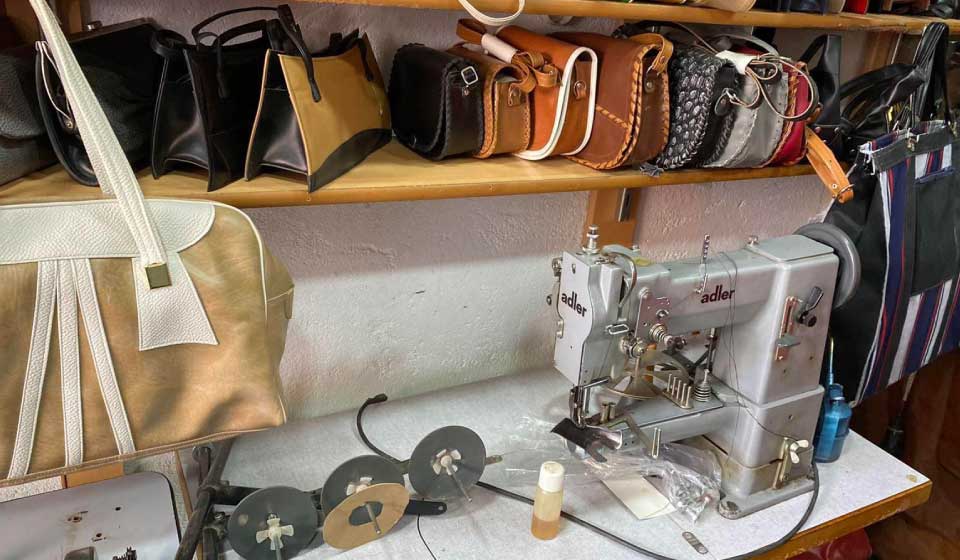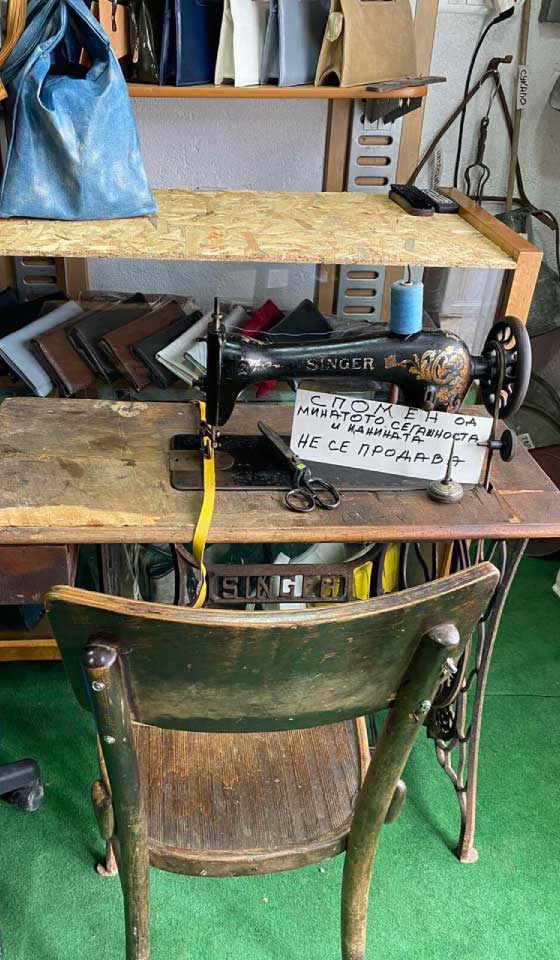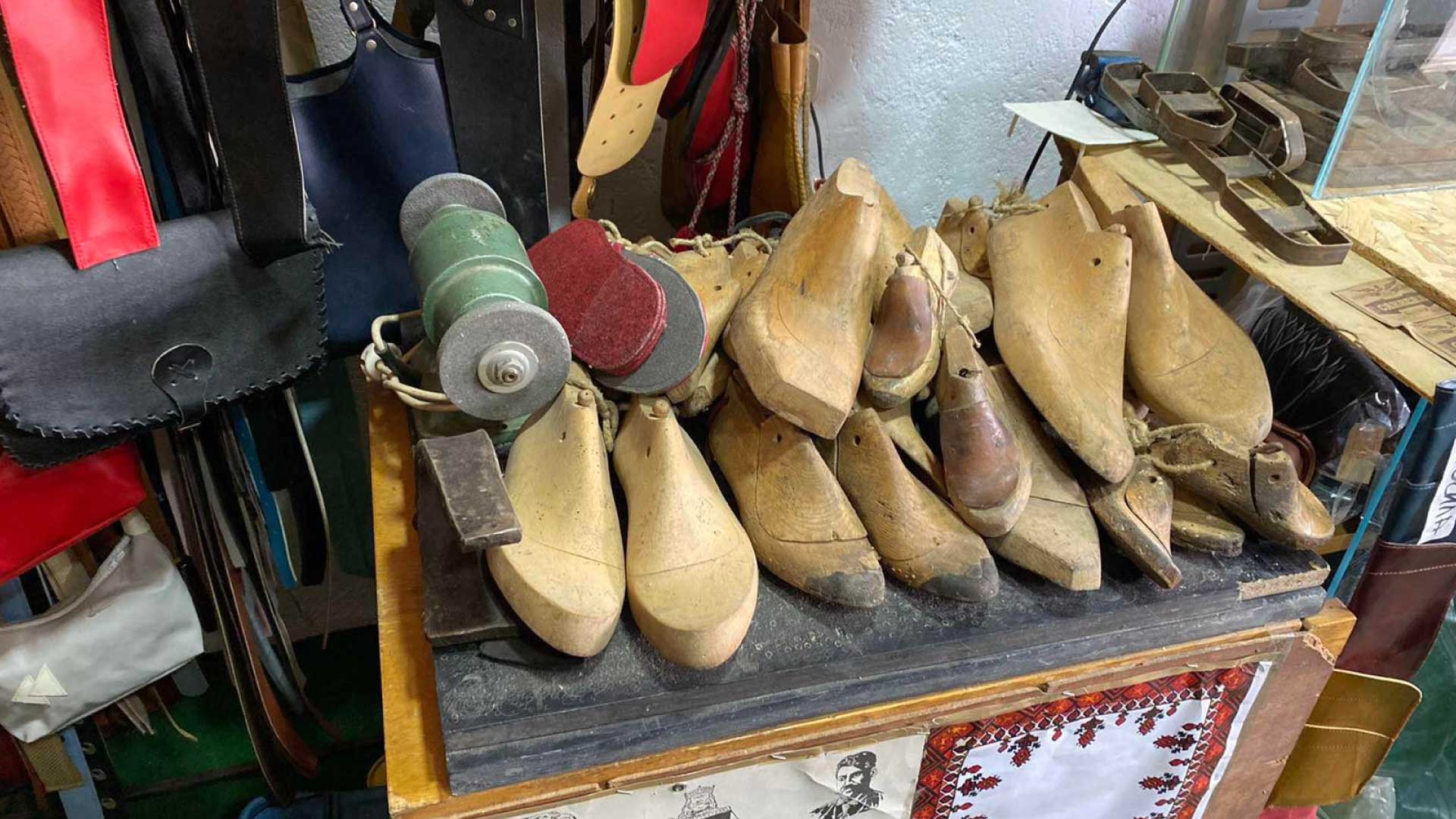Shoemaking – a Traditional Craft for Making Footwear
Shoemaking is a traditional footwear-making craft that is largely pushed away today by industrial production and Chinese goods offered on the market at a much cheaper price than hand-made products. Various models of shoes, boots, sandals, clogs and moccasins were made of leather, wood, rubber and plastic. On the other hand, the shoe molds on which shoes were made had been either made of iron or wood. The oldest craftsman from Struga, Jone Klenko, once a famous master in the Struga Bazaar, remembers with sadness the days when craftsmanship and quality were appreciated. He says that in order to be a craftsman, one had to be honest and work well to have customers. This profession, which he considers to be an art, is his greatest passion in life.
“I started as a child with my father, who had learned to make knitted leather sandals in France, and then in Belgrade he worked as a shoemaker and made only women’s sandals. In 1938, he took us there, too, while before the war, we fled and returned to Struga. We worked together, it was hard at the beginning because a shoemaker had to procure leather, soles and everything he needed, and then to make a pattern, while the most important for the craftsman as a shoemaker was to be honest because if he wasn’t, he wouldn’t have customers. Today, honesty is lost”, says Klenko.


Although he no longer makes any shoes and bags, the 90-year-old craftsman is in his home workshop every day. He inherited the craft, which he says is very difficult, from his father; however, over time and in line with people’s needs, he adapted to modern trends and now he wants to leave the corner where he worked, for the memory of future generations, to show how things were done in the past. He regrets that the craft is dying out and that he has no successor. His children got educated and chose a profession that brings them much higher income and he has no apprentices who would want to learn the shoemaking trade, either.
“It’s a pity that crafts are dying out. I find it very difficult to say this. I travelled all Yugoslavia just to learn more and today nobody is interested. I would go everywhere for tools. It’s hard for me to see that this craft is no longer taught. There is neither interest nor masters for young people to learn. The shoemaking trade is more difficult to learn than any higher education” points out Klenko. There used to be a large number of craftsmen in the past, today the number is getting increasingly smaller and only patchworkers or repairers have remained in this craft; there are no craftsmen making different models any longer.
Klenko says that in the past, the interest was huge not only among Struga and Ohrid people but also among tourists who wanted to wear unique handmade shoes that require patience, adding that women used to appreciate this more and wore heels more often; nowadays, young people rarely wear heels except for celebrations. Were they not made well, the customers would immediately return the shoes because they appreciated the good workmanship, adds the Struga master.
Today, anything that is cheap and of poor quality is in trend, while the value of what is of quality and made with great love and skill is not trendy. His workshop, where he still finds peace and tranquility, looks like a small museum where he has valuable tools, photographs, bags, shoes, souvenirs and other items that he made by hand, and here are the machines he worked on, one from 1926, with the inscription ‘any memory of the past, present or future… is not for sale’ on it. Although he is no longer working, he still fills his time with repairs of handbags, shoes and belts.


“For repairs only, I haven’t done anything new since 1995. This is all that has been done and remained ever since. Bags today come from all stores and boutiques; they bring them for repair. So this is what keeps me alive and with clear mind, and also the hope that I will do something to be proud of myself”, says Jone Klenko, a craftsman from Struga.
The oldest craftsman from Struga says that a strategy and care is required by the state to help old crafts. With great nostalgia he recalled the time when craft shops and great masters in their crafts were the elite of this society, while at the same time being the main ones to fill the state and municipal budgets. The huge number of shoes and bags made by the skilled hands of Jone Klenko from Struga testify to a different time when the craftsmanship in the Struga Bazaar was appreciated and valued.

